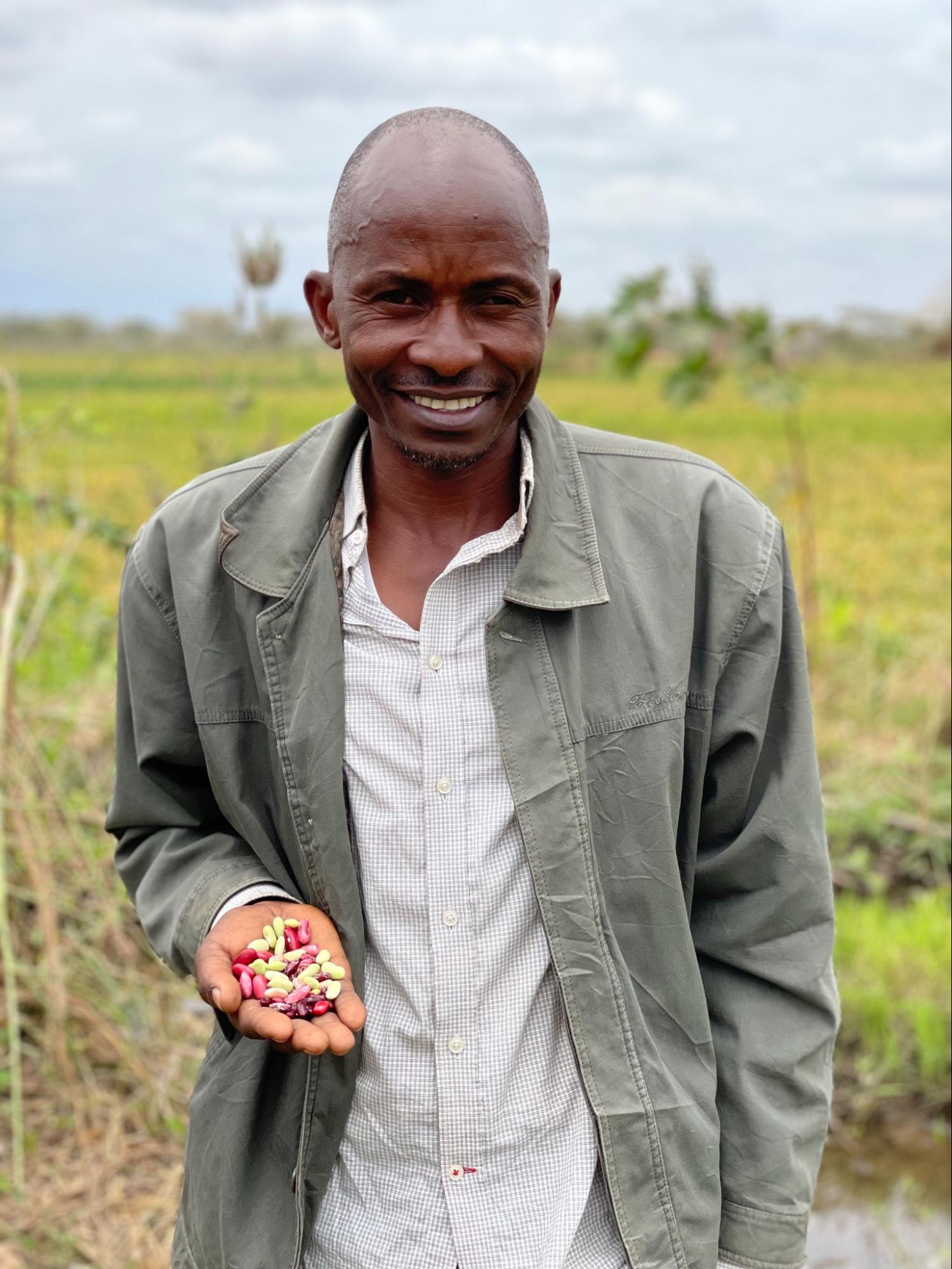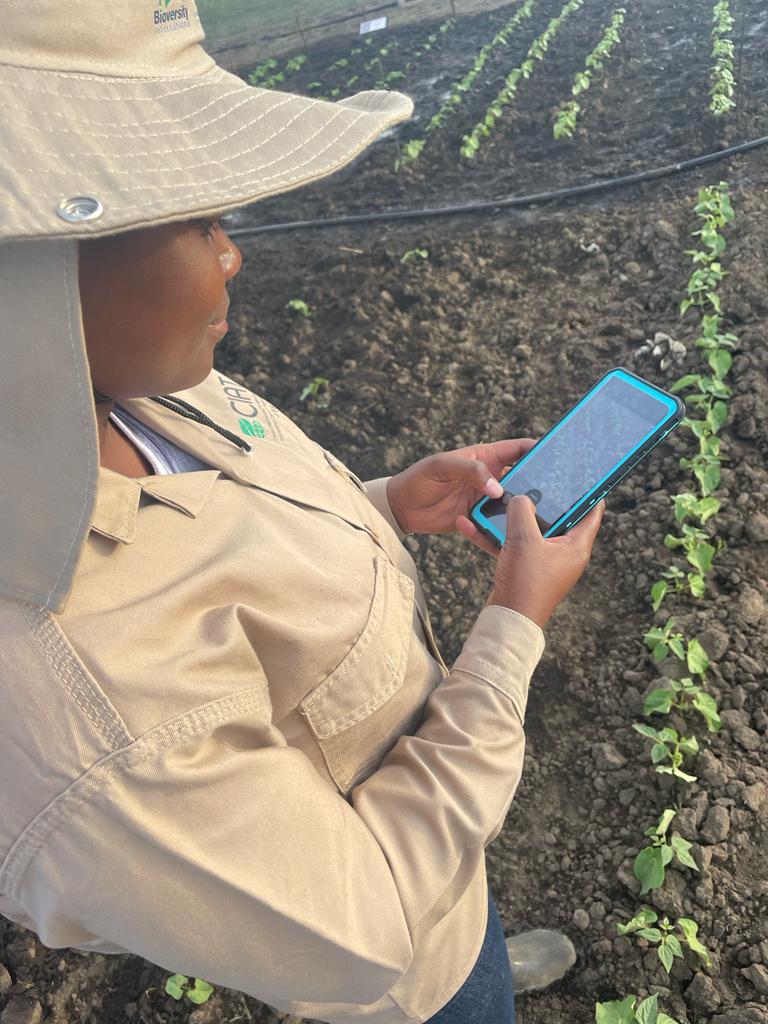CGIAR and Mineral: AI-enabled perception for breeding beans on a warming planet
| 7 min read
Ever wonder what it's like to be a crop breeder? It’s a tough assignment, but researchers at the Alliance of Bioversity International and the International Center for Tropical Agriculture (CIAT) are committed to it, to save hundreds of millions of people from food insecurity.
The Alliance is part of the Consortium of International Agricultural Research Centers (CGIAR), a global research partnership dedicated to enabling food security amidst an ongoing climate crisis. It’s one of CGIAR’s 15 specialized research centers, which maintains a seed depository of more than 37,000 bean varieties in Colombia. The organization develops these varieties as a public good, working alongside governments and private seed companies, with a tight focus on long-term sustainability to things like climate change and food security.
Working with smallholder farmers – who manage land on a more limited scale compared to production agriculture’s larger operations – in developing countries, the Alliance develops seeds farmers can plant and replant year after year - adapted to local environmental conditions and cultural preferences. It typically takes around 10 years to develop new crop varieties. As climate change is accelerating, this time frame is no longer acceptable.
The Alliance is working to develop a more scalable way of doing this breeding work so that crops adapted to local conditions can be developed faster. The key is to decentralize the breeding, accelerating discovery and testing in more locations to benefit the global agriculture community as we all sprint to adapt to a changing climate and an increasing population. And for these smallholder farmers who might have just a few acres of land for their family to both generate income and produce food for them to eat, there are no social safety nets if their crops fail due to climate change or pest and disease.
The problem
Beans are highly nutritious, acting as a primary source of protein and micronutrients for more than 300 million people in urban and rural communities in East Africa and Latin America, and spanning ~33 million hectares of global land, with 7.9 million hectares in Africa alone. But bean varieties that may have grown well in past years are likely not adapting to fast-changing climate, disease, and pest pressures, leaving some farmers with lower-yielding growing seasons and decreasing income.
Alliance scientists and local partners are racing to develop better varieties of beans with higher tolerances to heat, drought and low-phosphorus soils, in addition to improved nitrogen fixation. As noted, bean breeders can spend around 10 years developing a variety for use on these smallholder farms, as they also take into account things like flavor and cooking time. The breeding process is long and tedious, and can be quite expensive. For example, bean plants under heat stress drop their flowers without producing pods and seed, leading to lower years. Manually counting bean pods on plants across fields is not feasible by hand so breeders estimate visually, which is slow, and difficult to perform consistently. In order to accelerate their bean breeding programs, breeders needed to speed up their search for a partner that can leverage technology to help with this process. That’s where Mineral comes in.

Bean farmer in Tanzania.
“Plant breeding and crop varietal improvement have long been the primary drivers of agricultural productivity. The process has been the same for thousands of years, until the more recent genetic technique discoveries. Still, the majority of the breeding process happens in a field through a human’s visual estimation, and a lot of error comes with that: which breeder is doing the phenotyping that day? What is the time of data collection, or weather? It’s tricky, even before considering the continuous impacts from climate change. And because it can take about 10 years for a new crop variety to go through the entire breeding pipeline, there’s a risk that the climate-resilient plants we discover as viable for feeding our population take too long to develop. There is more pressure to get more accurate data to make selections faster, so we can adapt a crucial part of our food system to the climate crisis.”
— David Guerena, Scientist, Alliance of Bioversity and CIAT
The solution
Mineral’s work with the Alliance began in Colombian bean fields to focus on breeding challenges of uniformity of measurement, scale and cost. One of Mineral’s data collection devices, an electric rover equipped with AI-enabled cameras and perception technology, has captured thousands of images of each bean plant, counting traits such as every flower and every pod in every field.
This level of granularity just isn’t feasible from a human, meaning perception technology like this can help reduce the time it takes to count and record details of each plant. The rover collects GPS location as it moves through a breeding field. This, coupled with passing the data through Mineral’s modeling pipeline to extract the traits, allows breeders at the Alliance to understand crop growth using analysis of individual plant performance – and can be done across hundreds of plots.
Between Mineral and the Alliance, there are joint teams that run in-field sensing equipment, other teams that collect and analyze ground truth, and others that ensure the project runs on time and in pursuit of predetermined goals and milestones.
The results
With Mineral’s bean phenotyping support in Colombia for four growing seasons, the Alliance was able to get through a larger amount of analysis, in a shorter span of time. They could now track traits over time, such as flower formation or how pods mature – data points previously unavailable to researchers due to the large effort it would take to collect this data manually.
Alliance researchers say their partnership with Mineral using in-field technology like the rover could bring greater speed, frequency, and accuracy to their crop trait measurement than has been possible before. These improvements could empower breeders with a richer portrait of how each variety is performing, allowing them to more quickly identify varieties with optimal traits. For example, Mineral could unlock the ability to see how a bean plant is flowering over time – a completely new trait metric they had not been able to track previously at scale and with accuracy because the different components of flowering are so subtle. With this new insight, breeders can better understand how bean varieties will cope and continue to reproduce in response to different environmental stressors, like hotter temperatures and droughts.
The same goes for counting pods With Mineral’s perception technology, the Alliance can now count every single pod in a field throughout the season, not just at harvest. Before working with Mineral, the Alliance was only able to count by hand the pods on a subset of plants - then average them for an entire plot. This approach is less accurate, but was the best option at the time to conserve scarce resources and labor.

Researchers will be able to ‘count’ thousands of pods in a field in a fraction of the time it traditionally takes to count beans by hand. Pod counting can help understand which varieties yield higher, which is always a critical trait to breed for.”— Erica Bliss, Chief Commercial Officer, Mineral
As data collection between Mineral and the Alliance continues, the rover laid the foundation for even greater scale and accessibility using a little device most people have in their pockets – a mobile phone. The learnings and principles from the Mineral rover in Colombia are being applied to mobile phones used for data collection of beans in Tanzania.

Mineral’s AI models built from mobile phone imagery could provide a quantitative understanding of beans that helps researchers scale to more plots, expedite discovery, and make more informed decisions – using a low cost, existing tool that fits in the palm of their hands.
"What’s really exciting and impressive is that these mobile tools have the potential to enable on-farm breeding. We could move the breeding process from the restrictive trial plots of a single research location, to right on individual farms. A move like this would allow the breeding community to distribute the process across partners, such as NGOs, government, to enable locally adapted varietal development at a faster pace. It’s a revolutionary and transformative possibility, and we are very excited to work with Mineral on this journey."
— David Guerena, Scientist, Alliance of Bioversity and CIAT
Researchers say that the promise of bringing powerful AI-enabled perception technology to phenotyping will help measure crop traits faster, more often, and with greater accuracy.
Part of addressing these challenges as partners means working smoothly and productively, together. Mineral brings the perception technology, AI modeling expertise and unmatched technical execution within the agricultural domain, while The Alliance of Bioversity and CIAT brings expertise in their craft of developing climate-resilient bean varieties to support humanity’s long-term existence on earth. Combined, we are making progress with our partners to better understand plantkind to feed and protect humankind.
Related case studies